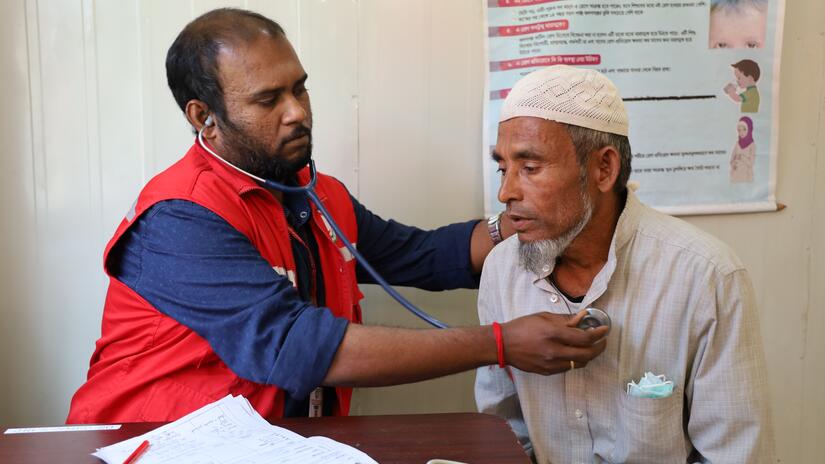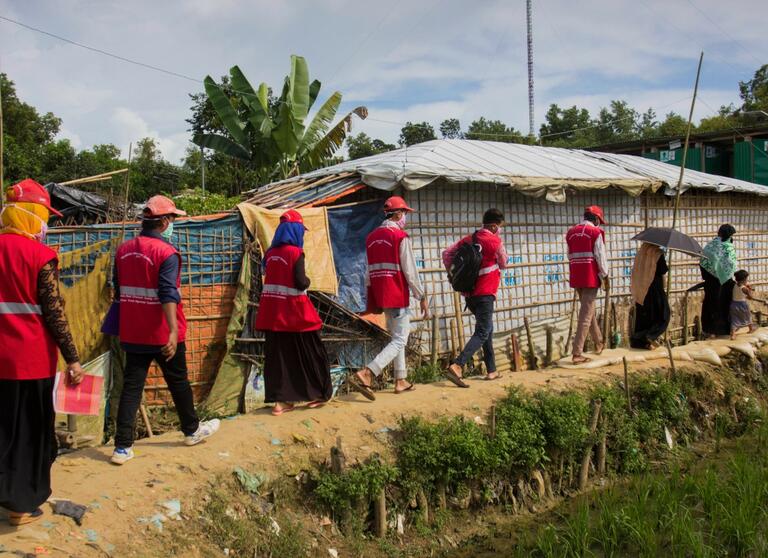Kuala Lumpur, Cox’s Bazar, Geneva, 24 August 2020: New data reveals that nearly one in five (17.9%) people being treated for medical conditions in displacement camps in Cox’s Bazar are already experiencing some form of lung disease as COVID-19 spreads in one of the most densely populated places on earth.
Three years on from a mass exodus triggered by violence on 25 August 2017, close to 1 million people displaced from Rakhine, Myanmar, also face many other chronic health conditions, including malnutrition and diarrhea, in overcrowded camps.
Syed Ali Nasim Khaliluzzaman, Head of Operation of the Bangladesh Red Crescent Society in the Population Movement Operation in Cox’s Bazar, said: “My greatest fear is that high and unacceptable rates of acute respiratory infections, diarrhoea and malnutrition, all make families more at risk of COVID-19.”
To date, there have only been 82 cases of COVID-19 and six deaths reported among the population of displaced people living in the camps. But concerns remain high, and these figures may not tell the whole story.
“The true extent of the COVID-19 outbreak is unclear due to some challenges with the testing capacity and participation by people in the services and health facilities available in the camps. Red Crescent volunteers are going door to door to provide people with lifesaving information and protective equipment to stay safe from the disease,” Mr Syed Ali Nasim Khaliluzzaman said.
Despite the serious health concerns, there have been hard fought gains in the past three years. as chronic health conditions including unexplained fever, diarrhoea and other infectious diseases have reduced, according to World Health Organization figures, despite some of the harshest living conditions in the world.
The figures show that intense public health measures and boosted access to limited medical care have succeeded in containing many serious diseases including diphtheria and measles.
The rate of unexplained fever reported in health clinics is nine times less than three years ago at the height of the mass movement of people fleeing violence.
Sanjeev Kumar Kafley, Head of the International Federation of Red Cross and Red Crescent Societies (IFRC) sub-office in Cox’s Bazar said: “Every day we see the remarkable strength and resilience of people who live in these camps. It doesn’t ring true that there have only been around 82 identified cases of COVID-19. We are very concerned that there may be many more people sick and infected.”
“We have two new COVID-19 isolation and treatment centers treating people along with 11 existing health facilities, all helping to close the gap in critical medical care,” Mr Kafley said.
Bangladesh Red Crescent teams, supported by the IFRC and other partners, are providing critical ongoing healthcare, relief supplies including safe water, longer-term support for more secure homes, along with protection and support for women and those most at risk. The relief operations are among the biggest ever in the region.

133,232,000
CHF Needed to help most vulnerable

84,792,486
CHF currently funded



